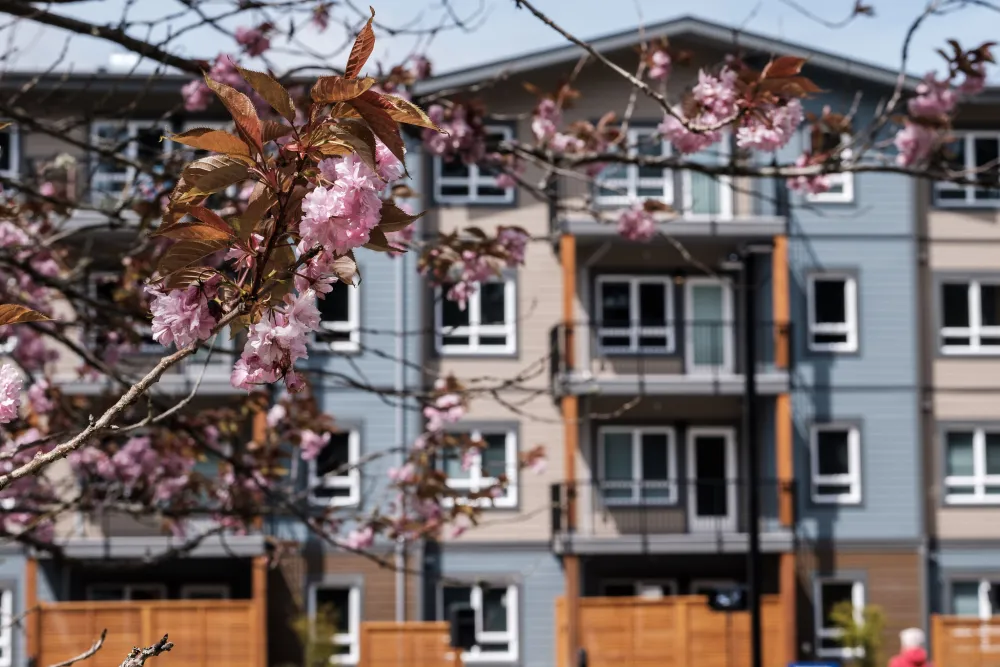With election day in the rear-view mirror, many British Columbians are looking to the provincial government to take strong leadership on urgent economic and social priorities in concert with bold action on climate change. Upgrading the buildings where we live and work ticks all of these boxes by (1) reducing carbon pollution, (2) increasing safety, public health and housing affordability, and (3) aiding in economic recovery by creating thousands of local jobs using mostly local materials. Property assessed clean energy (PACE) financing can help us achieve this vision by kickstarting a thriving retrofit economy.
What is PACE?
PACE financing is an innovative “green” loan instrument developed in California in 2008 that overcomes the capital constraints that many buildings owners face when contemplating upgrades. The concept is simple: building owners borrow funds to complete retrofits, such as replacing gas furnaces with heat pumps, upgrading windows, adding solar panels, or even making seismic improvements. What makes these loans different is they are registered on the property title, not to the owner, so they are transferable with the property’s sale and are repaid in installments added to property taxes over the retrofit’s lifespan. PACE programs are now active in 37 U.S. states, resulting in almost 300,000 retrofit projects and $16.5 billion US in economic impacts.
PACE, which enjoys cross-sector support, is attractive to commercial and residential property owners because they can fund projects with no out-of-pocket costs. PACE’s transferability from one owner to the next with the sale of the property means that building owners are only on the hook for the cost of a retrofit during the period they are benefitting from it. With flexible financing terms and repayment periods up to 30 years, it’s possible to take on deep, whole-building retrofits with substantial energy and carbon savings. The annual utility bill savings for a PACE project sometimes surpass the yearly repayments (levied on property tax bills) so that property owners can be cash-flow positive immediately. That means building owners have more money to spend on other capital projects, expenses, or business expansion.
Can PACE work in B.C.?
PACE requires provincial legislation allowing municipalities to establish PACE programs. The most successful U.S. models use third-party administrators to implement state-wide programs. We can do the same here. Local governments have expressed growing interest via Union of B.C. Municipalities resolutions. Adopting a province-wide program would help cities meet climate goals without saddling cities with debt.
In September, the government committed to investing $2 million in a PACE roadmap and pilot program through its Economic Recovery Plan. This investment is welcome, but sound policies can fail through poor execution. Without scale and continuity, a pilot program would likely not achieve the desired outcome. The U.S. experience shows that it takes time and scale to create a PACE ecosystem where property owners, underwriters, appraisers, financiers, and contractors understand PACE and are comfortable with its promotion and use.
How can we get to implementation?
PACE BC — an alliance of city councillors, business owners, and environmental organizations — is asking the provincial government to unlock PACE for British Columbians through enabling legislation. To help the government move quickly, we’ve consulted with industry and experts and drafted legislation that would allow any municipality to opt into a province-wide PACE program.
The government will need to move quickly to grow the retrofit economy. PACE financing will be a game-changer for owners looking to invest in protecting the homes and buildings we live, work, and play in. Unlocking PACE early in the government’s new mandate is critical for building on the economic recovery investments expected to flow to retrofits.
Muneesh Sharma is the director of government affairs for the Building Owners and Managers Association of B.C. Madi Kennedy is an analyst with the Pembina Institute. Both are members of the PACE BC coalition.
This op-ed appeared in the Georgia Straight on November 2, 2020.









